Micro-Earth, Biosphere 2 -- The Ultimate Haven
"We were in quarantine for two years. Or we put the rest of the world in quarantine for two years."
"Any time there was a special occasion of drink or food, all the conflict [among the eight people who volunteered to live within the confines of Biosphere 2 for two years] drained away. No one wanted to spoil it."
"Whatever food and drink really makes people happy in quarantine should be pursued. This isn't fun unless we can have feasts and parties and do home brewing [under quarantine from COVID-19]."
"Wherever you are, you are supported, and you are living, because we have a healthy Earth biosphere. Fall in love with every bit of it. The plant on the windowsill, the tree on the corner. We have to understand that every breath of air that we take, every drop of water, every bit of food is produced by our biosphere."
"That's the awareness we need to come out of this pandemic. We're all connected. It's showing us the downside of it. But we need to recognize the flip side. Think of this amazing biosphere that's given us birth."
"Biosphere 2 was so far ahead of its time that it offered an understandable way of getting around what a biosphere was. We weren't making a model of planet Earth, thank you very much. It was a little slice."
"It totally transformed me, and everyone else who was in there. I'm still digesting it. The incredible bodily connection that all of us felt with that living system, to where it was unthinkable that we would harm it in any way. The mindfulness with which we took care of the biome. The tender loving care that we took, and the visceral sense that we were connected was also part of the human dimension."
"That knowledge and that love went from my brain, my mind, to my body. To where my body got it. My bodily understanding that I was connected to that world."
On one level being alone with seven people was like being in an encounter group, or group therapy, for two years. I got to see ways I related to other people that I didn't like. I had to change who I was."
Mark Nelson, 77, former 'Biospherian'
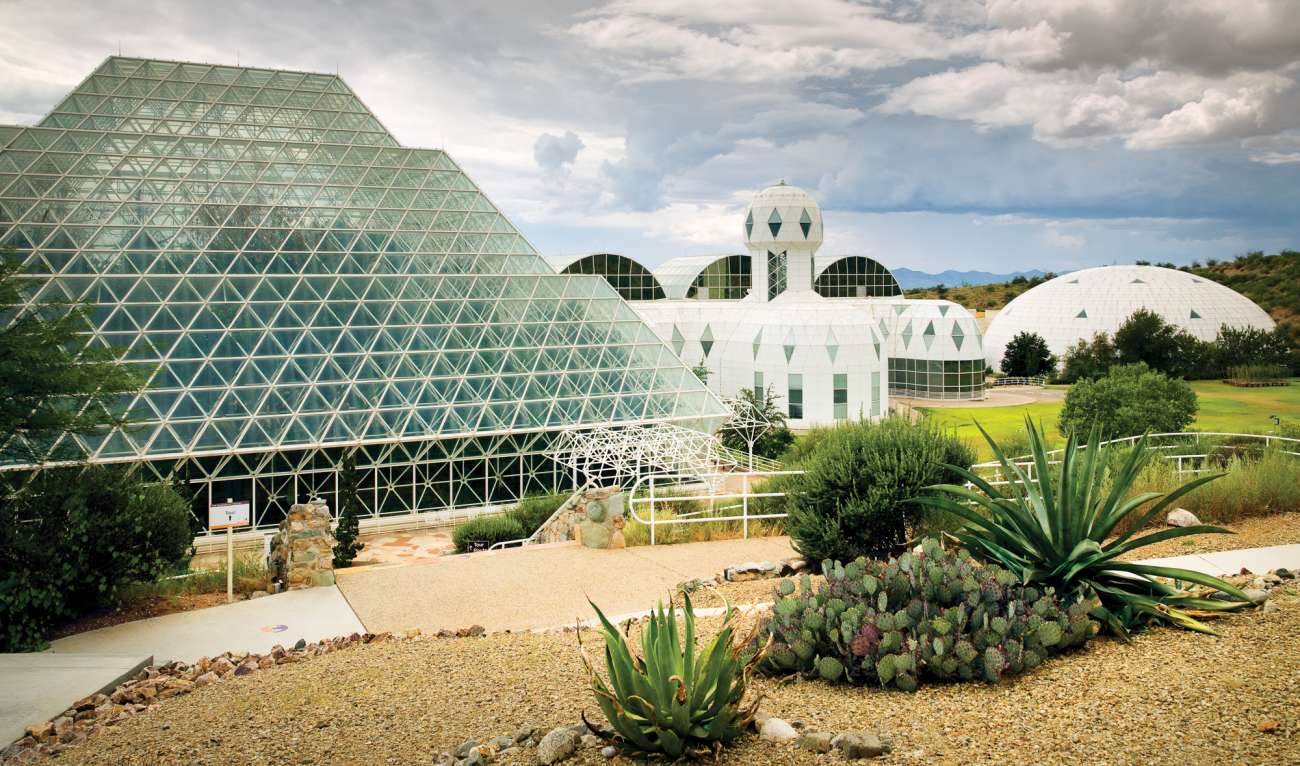 |
| Biosphere 2, Mark Nelson, 1991 |
"Leonardo da Vinci talked about flying machines. Centuries later the Wright brothers built one. Biosphere 2 may prove to be the Kitty Hawk of biospheric life-support systems."
"Then again it may prove to be one of those airplanes everybody sees in the movies and laughs at that had 16 wings flapping at the same time."
Biosphere 2 patron Ed Bass, 1991
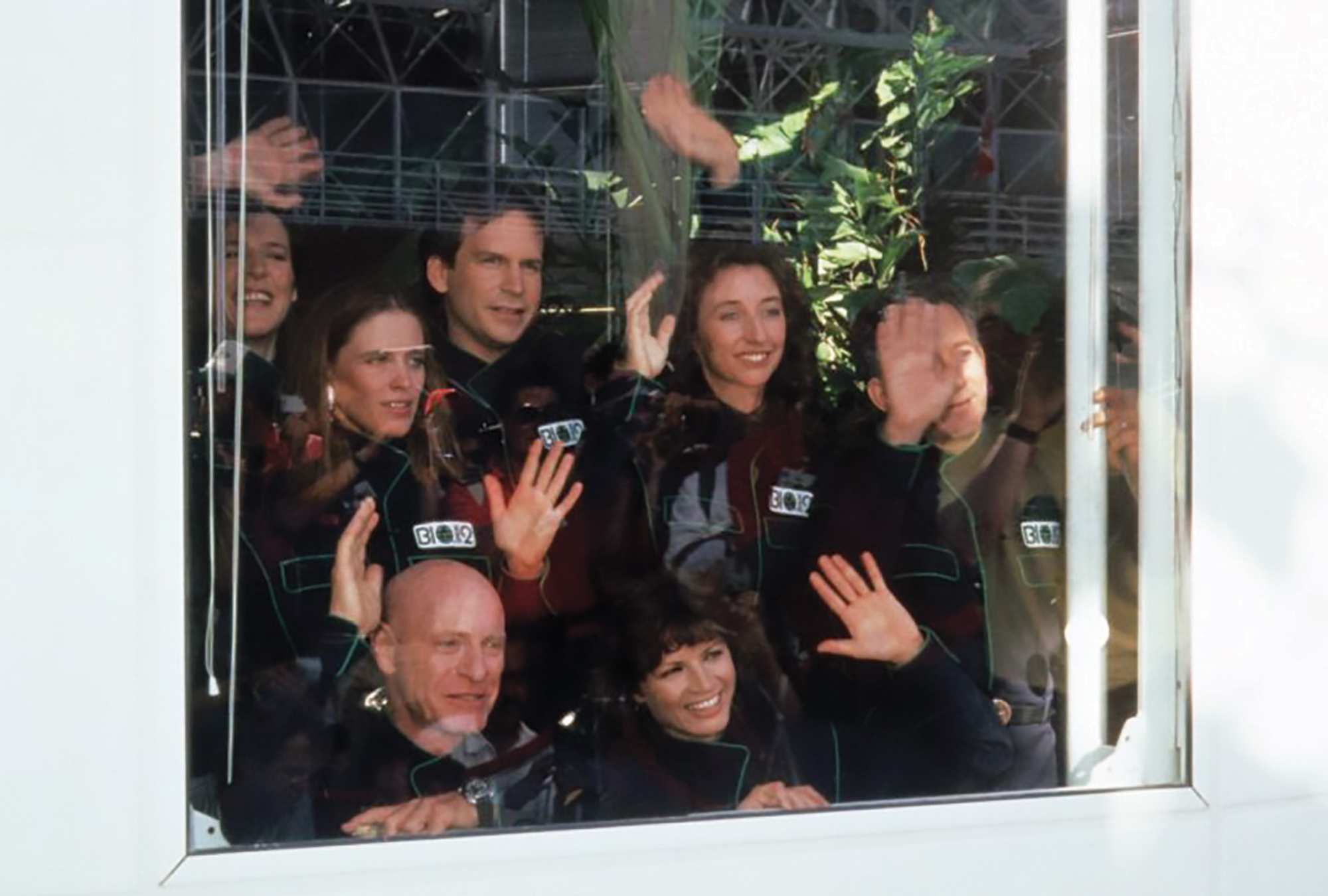 |
It was an imaginative, forward-looking experiment. A costly one, to invest in the needed infrastructure, to develop a system that was as true to the Earth's atmosphere and support of living creatures and vegetation as possible, to allow for self-isolation in a grand experiment where a group of eight people intended to see whether they might succeed at being self-sufficient, as stewards of a miniature Earth, drawing from its resources whatever they needed to sustain life, not only for themselves but for the creatures living alongside them, from insects to birds, mammals to vegetation.
It was quite an ad hoc experiment. The inhabitants of Biosphere 2 who named themselves 'Biospherians', were five Americans, two Brits and a Belgian, comprising four of each gender, included among them a botanist, a marine biologist and a physician. The very same professions, in fact, that sea-voyaging geographical exploratory missions of the past setting out to discover new continents and other inhabited locations worldwide with different cultures and levels of civilization generally brought along, in humanity's search to know the world they lived within, through the ages.
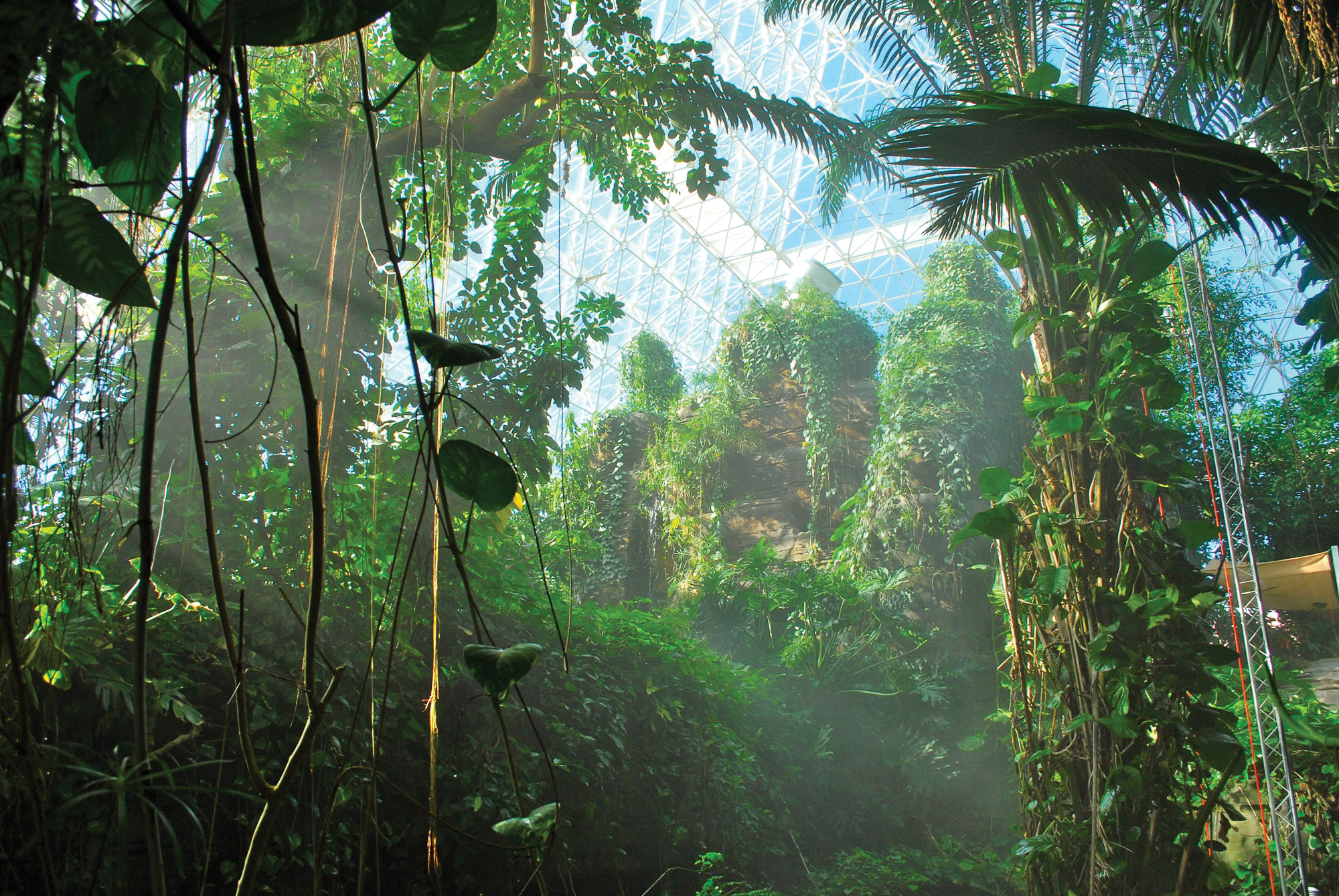 |
In cloistering themselves and shutting themselves away from the outside world, their adventure in living was meant to instruct the participants on how to manage lives separated from all that was familiar as they re-acquainted themselves with the natural world at a level none had ever before experienced and developed sustainable techniques. Biosphere 2 was planned and created to enable the eight people within to creatively live independently. The complex into which they had sequestered themselves was of an immense size, purpose-built through the 1980s in the Arizona desert..
The Biosphere had an ocean with coral reefs, a miniature rainforest, a desert, and a wide range and plenitude of flora and fauna, living among the eight humans. One of whom badly injured herself which mandated she be withdrawn from the closed atmosphere to undergo surgery on her hand. Once her injury was resolved, she returned to the Biosphere. Among a few controversial revelations was that the 'all-natural system', of the breathing, living atmosphere meant to sustain life 'naturally' through its micro eco-system, was the presence of a carbon dioxide scrubber to ensure fresh air could be pumped in to avoid potential hypoxia.
As Mark Nelson wrote for publication in a Dartmouth College journal, as a former Dartmouth alumni, the group grew all their food, raising and slaughtering livestock. They had a laboratory, they were busy maintaining equipment and had their personal living quarters. Everyone was required to work from three to four hours daily, five days a week, to help produce the food they depended on for nutritious health. With no agricultural background among any of them, they were spurred by the reality that if they didn't produce they wouldn't eat.
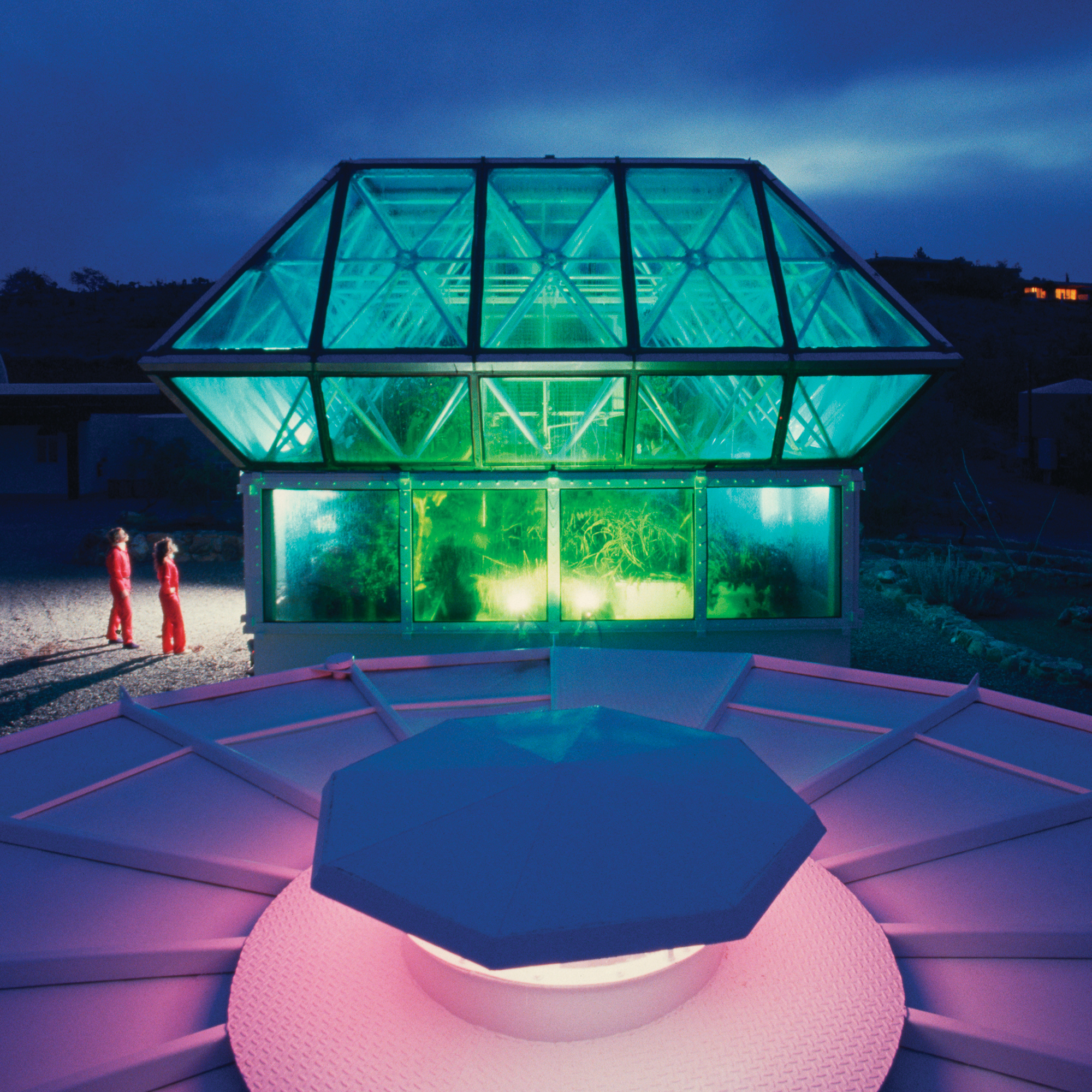 |
And eat they did, learning to produce 80 various crops, from rice to yams, peanuts, sorghum, millet, beets, wheat, carrots, peppers, bananas, figs, tomatoes, kale, eggplant, onions, papaya, beans, sweet and white potatoes, squash and herbs. Biosphere 2 was host to 3,000 species of plants and animals.
Crops were grown with biological controls, and organic matter was recycled for composting. And lessons were learned; the cockroaches they hosted meant to recycle organic matter grew exponentially in numbers and began threatening the crops. A situation seen in ants, as well.
Bees and hummingbirds, two of the most delightful animals, and reliable pollinators eventually failed to survive the atmosphere. And eventually the atmosphere itself failed in its purpose to sustain life when oxygen thinned out necessitating the opening of the sealed domes so fresh air could be circulated and replenished. Despite inconveniences and downright emergencies where the inhabitants of Biosphere 2 had little option but to temporarily abandon the airtight sanctity of the domes, they persevered and lived for the appointed two years, isolated and self-sufficient.
Mr. Nelson himself now lives and works on a working farm, serving as an ecology research centre and retreat in New Mexico, called Synergia Ranch, a group he first joined after graduation from Dartmouth College in 1968.
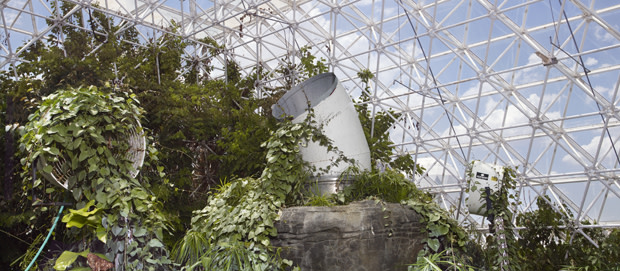 |
| Biosphere 2's 91-foot-tall rain forest contains more than 150 plant species and now provides scientists a test ground for ecosystem experiments. Douglas Adesko |
Labels: Biosphere, Earth, Experiment, Isolation, Nature

0 Comments:
Post a Comment
<< Home